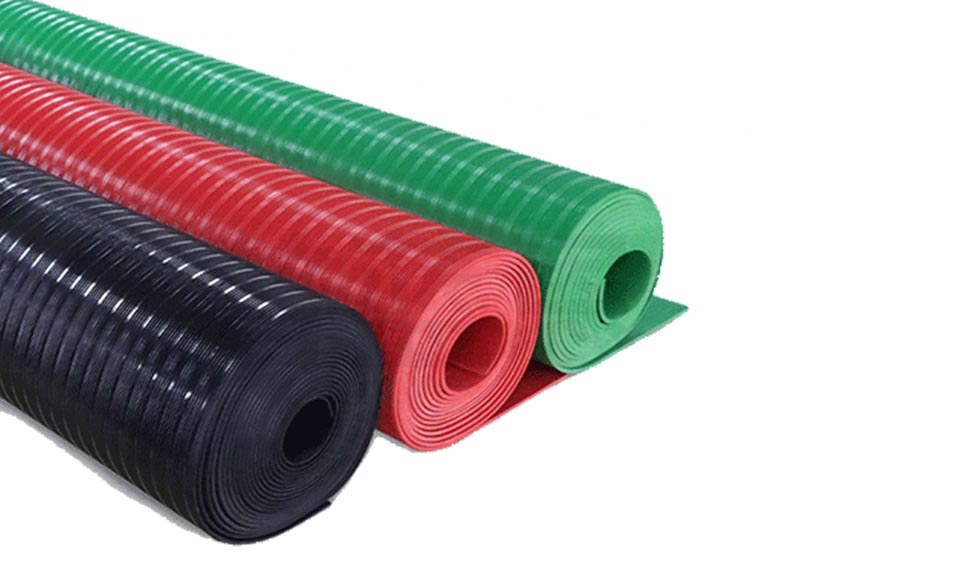
How to clean the insulating rubber mat
Recently, some customers have asked how to clean the insulating rubber mat when it is dirty? Indeed, insulating rubber mat plays a vital role as an important safety equipment in power distribution rooms, laboratories and other places. It not only provides reliable electrical insulation to prevent the current from triggering short circuit, electric shock and other dangerous accidents, but also concerns the safety and stability of the whole working environment. However, with the passage of time and the influence of the use of the environment, the surface of the insulating rubber mat will inevitably appear dirty, when the surface of the insulating rubber mat is dirty, not only will affect the appearance of the insulating rubber mat, but also more importantly, may reduce its insulating properties, increasing the risk of electrical accidents. Therefore, the correct cleaning method can not only restore its original insulation properties, but also extend the service life, to avoid potential safety hazards. Today I would like to introduce you to the cleaning method of insulating rubber mat and daily maintenance precautions.
Preparation before cleaningBefore cleaning the insulating rubber mat, be sure to ensure that the relevant equipment has been disconnected, and to ensure that the rubber mat has been removed from the use of the environment, and placed in a well-ventilated, less dusty place, in order to prevent accidental electric shock. Choose the right cleaning tools: Prepare clean, soft rags or sponges, avoid using tools that are too rough or with sharp edges, so as not to scratch the surface of the insulating mats.
Cleaning stepsInitial cleaning: First, use a clean, dry rag to gently brush away dust and debris from the surface of the insulating mat. This step removes most of the loose dirt and lays the foundation for subsequent deep cleaning.
Wipe with a soft cloth: Dip the rag into an appropriate amount of neutral cleaner, avoid using any cleaner containing solvents, acids and alkalis, as these chemicals may damage the surface of the mat. Then gently wipe the surface of the insulating rubber mat. Pay attention to the control of wiping strength, to avoid excessive force leading to deformation or damage to the insulation pad.
Focused cleaning: For stubborn stains, you can use the appropriate amount of cleaner or silicone oil (small amount) for focused cleaning. But be sure to ensure that the cleaner will not damage the material of the insulating rubber mat, silicone oil should be used in moderation to avoid causing slippage.
Natural drying: After cleaning, do not rush to use the insulating rubber mat, should be placed in a ventilated place to dry naturally. Do not use heat to accelerate the drying process, so as not to affect the performance of the rubber mat. At the same time, avoid direct sunlight and rain, maintain a dry environment to help extend the service life of the insulating rubber mat.
Inspection and testing: After the cleaning is completed, carefully check whether the surface of the insulating rubber mat is clean, no scratches, whether the surface is broken, aging phenomenon; whether the colour is uniform; whether there is a peculiar smell and so on. If there is any abnormality, timely measures should be taken to deal with or replace it. In addition, it is recommended that the insulating rubber mat be tested for industrial frequency voltage resistance once a year to ensure that its performance meets the safety requirements.
Daily maintenance pointsRegular inspection: Regularly check the wear and tear of the insulating rubber mat and whether the insulation performance is up to standard. If found aging, broken or insulation performance decline and other phenomena, should be replaced in a timely manner with a new insulating rubber mat to ensure the safety of electrical operations.
Avoid scratching: In the process of use, should try to avoid sharp objects scratching the surface of the insulating rubber mat, so as not to affect its insulating properties. At the same time, attention should also be paid to prevent the heavy objects pressure caused by deformation or damage to the pad.
Proper storage: when not in use, the insulating rubber mat should be stored in a dry, ventilated, dust-free environment, avoiding direct sunlight and moisture. It is best to use special boxes or bags for storage to prevent the accumulation of dust and dirt.
Keep away from harmful substances: Make sure the insulating mats are kept away from oil, acid, alkali and other harmful substances as well as heat sources to prevent corrosion and aging. The temperature of the storage environment should be controlled within the appropriate range to avoid the impact of too high or too low on the performance of the mats.
Regular cleaning: according to the frequency of use and environmental conditions, develop and implement a regular cleaning programme to keep the insulating mats clean and dry.
Timely replacement: once found that the insulating rubber mat aging, broken or insulation performance decline, should be replaced immediately to ensure work safety.












